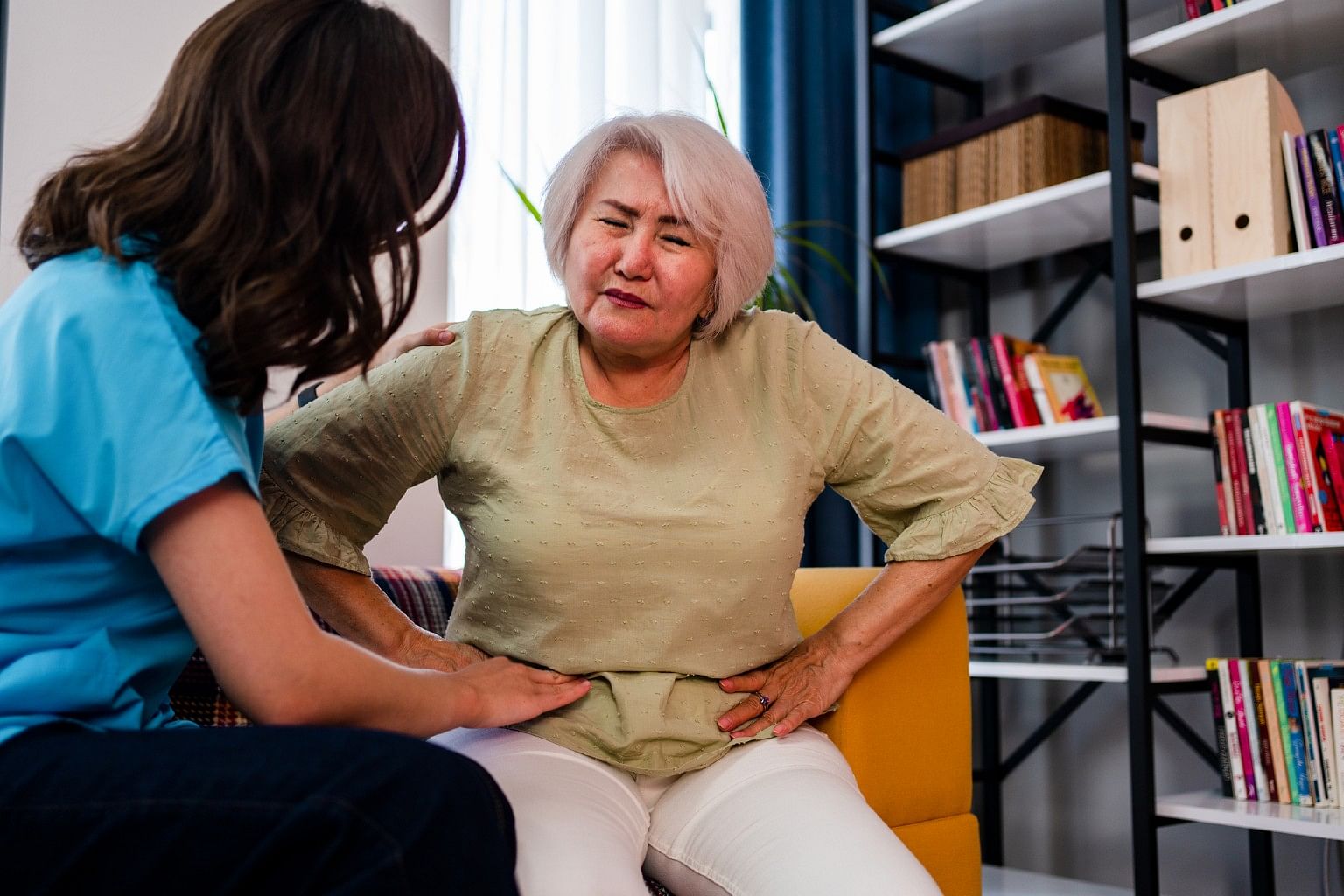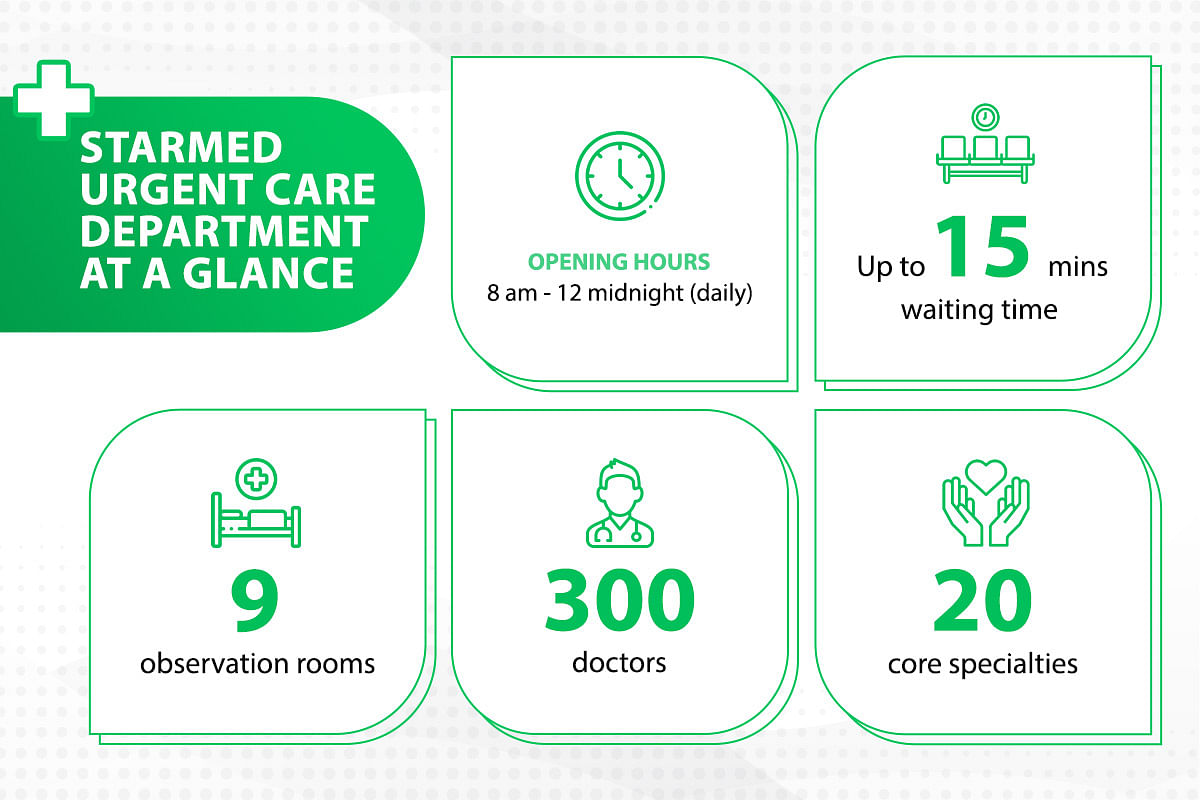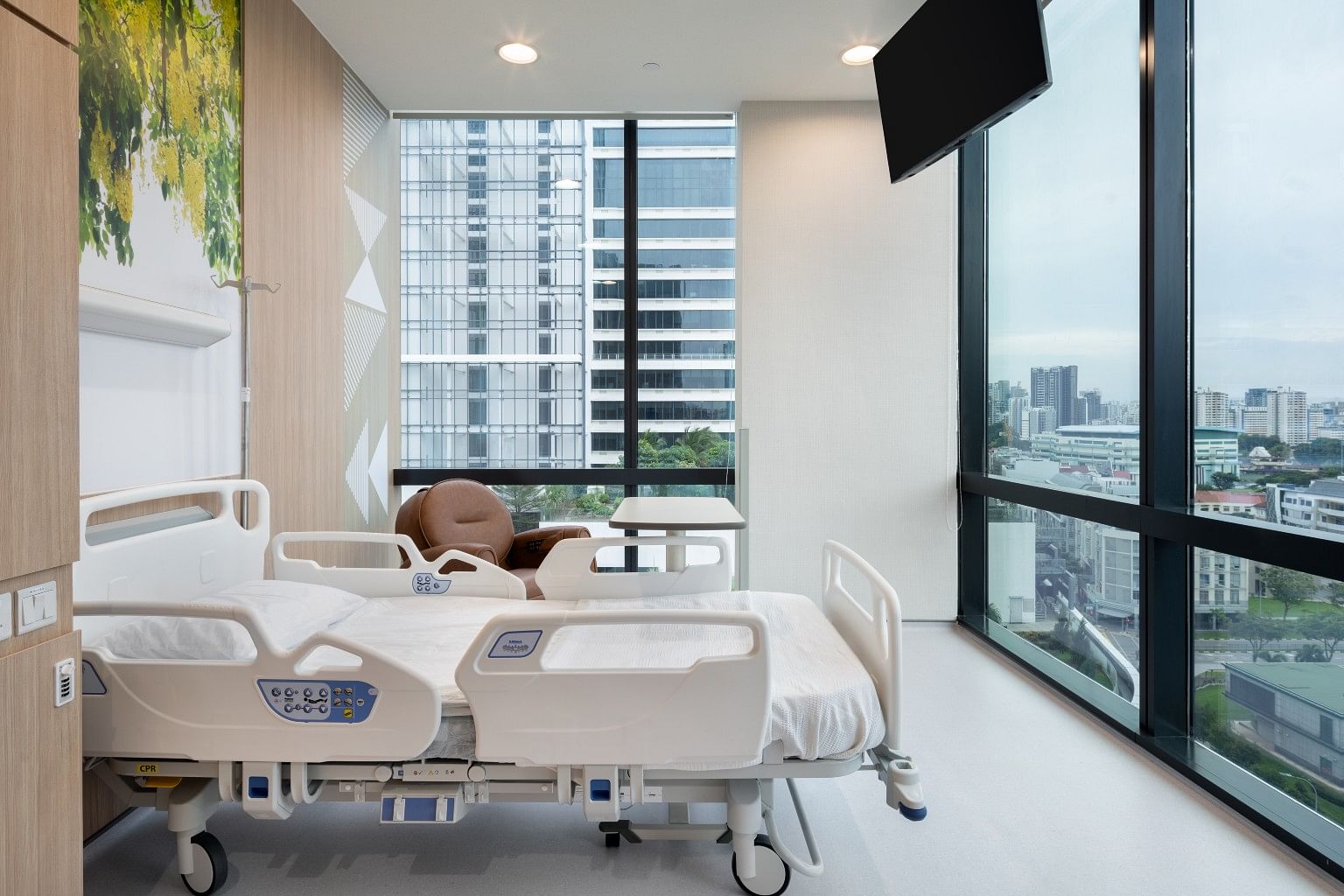When an elderly parent falls or a child experiences stomach cramps or high fever, most caregivers would rush them down to the accident and emergency (A&E) department of the nearest hospital.
However, going to the A&E department can potentially mean a long waiting time before you get to see a doctor and get a diagnosis.
Take the children’s emergency department at KK Women’s and Children’s Hospital and National University Hospital, for instance. About 80 per cent of its patients last year did not require hospitalisation and were discharged after their visits, according to the Ministry of Health.
A contributing factor for the long wait times at the emergency department is the lack of awareness of where else to seek medical attention, says Dr Sanjeev Shanker, emergency medicine specialist and family physician at StarMed Specialist Centre, conveniently situated above the Farrer Park MRT station.
“We’ve never had an option other than general practitioners (GP) and A&E for the past 50 years. People go to the GPs for minor conditions like mild respiratory infections and the management of chronic conditions like diabetes and high blood pressure. For everything else, they rush to the A&E,” he adds.
Besides GPs and hospitals, there are alternative options, such as urgent care facilities, to seek medical care. Urgent care typically refers to conditions that require early attention but are not life-threatening. In 2019, a public hospital reclassified their A&E department as an Urgent Care Centre after a renovation to focus on non-emergency procedures.
Since then, a few more urgent care centres have been established in Singapore, one of them being StarMed Specialist Centre’s urgent care centre, which opened three months ago.
For non-life threatening conditions
Dr Sanjeev says that at StarMed’s urgent care centre, patients wait an average of 15 minutes to see a doctor. But when should you go to an urgent care centre instead of the A&E department at a hospital?
He says: “Think about your condition and ask yourself: Are you concerned about something that is going to kill you or are you in danger of losing your limbs or vision? If the answer is no, then Urgent Care is an excellent option.”
Non-life threatening conditions that do not warrant a visit to the A&E department include sprains, fractures, cuts and abrasions, Covid-19 with mild symptoms, food poisoning, allergic reactions, stomach pain, among others.
For young children who develop a sudden fever or after minor falls, there is also no need for parents to send them to the hospital.
Dr Sanjeev says: “Majority of these cases are not urgent. If the child has mild symptoms, the doctor will most likely give them medications and send them home. But they would have waited six hours for that.”
However, if your child is having a seizure, is unconscious or has been involved in a major accident, then go to the emergency department at once.
For the elderly, common symptoms such as abdominal cramps and bloatedness do not usually warrant a visit to the A&E department, says Dr Sanjeev. It is the same with fever – caregivers tend to panic when their parents have fever, thinking that it may be caused by a serious condition such as pneumonia.

These symptoms can be investigated with a blood test and X-ray at an urgent care centre.
If an elderly person has a fall and is still awake and alert, you can take them to urgent care to get scanned, shares Dr Sanjeev. However, if they are barely conscious, confused and cannot eat or show symptoms of a stroke, it’s best to take them to the A&E department immediately.
Getting treated at an urgent care centre
Those who go to an urgent care centre will be able to receive appropriate medical attention and care for a range of conditions. StarMed's urgent care centre’s doctors and nurses are trained in emergency medicine as well.

Patients can get diagnosed, assessed quickly and even get admitted to StarMed’s ward straight away for a short observation, if required.
The centre is also equipped to do tests such as X-rays, magnetic resonance imaging (MRI), computerised tomography (CT) scan, and patients can also undergo blood tests, scopes, receive intravenous medication, and even have day surgery done.

Similar to how an A&E functions, if a patient needs to be referred to another specialist, there is a panel of consultants from a wide variety of specialties such as cardiology, internal medicine, general surgery, gastroenterology, ophthalmology, orthopaedic and paediatrics, who can come down to assess the patient at the urgent care centre, or see them the next day in the outpatient clinics
StarMed also has nine patient observation rooms if patients need to be warded for short periods of observation. Cases that may need observation include food poisoning, kidney stones and head injury.
The aim is to treat patients and get them home as soon as they are able to.
“We have a team of dedicated and experienced healthcare professionals to attend to you, diagnose and provide you the most efficient and effective treatment so you can get home as quickly as possible. We want to make healthcare simple for you,” says Dr Sanjeev.
If prolonged treatment or hospitalisation is required, doctors at StarMed can arrange transfers for patients to receive follow-ups at public and private hospitals.
StarMed Specialist Centre’s urgent care centre, at 12 Farrer Park Station Road, is open from 8 to 12am daily.


